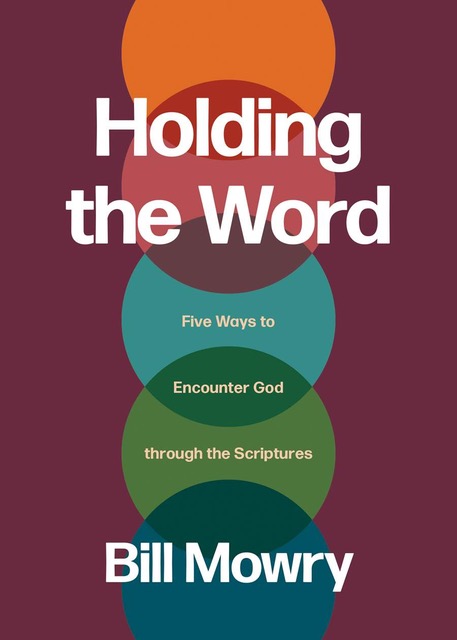I was marked by the cross this past Wednesday. Peggy and I attended a Lenten service and received the sign of the cross in ashes on our foreheads. How did two Baptists end up at a Lenten service?
I grew up attending a small rural Presbyterian church. Before I told God to “shove off” in my teen years, I heard and participated in ceremonies called “Advent” and “Lent.” No one ever explained the meaning of these seasons; they just showed up in the changing color of the pastor’s robes and in the seasonal bulletins.
My current evangelical tradition seldom mentions Lent or Advent. Since nobody teaches about these seasons, I assume the subject isn’t important. This began to change for me when I read Mark Cosper’s book, Recapturing the Wonder.
Cosper encourages us to develop signposts in our lives; those significant moments that “call us to remember that we are citizens of a different world.” To do this, we need a life pattern of marking time with God — creating yearly, monthly, weekly, and daily events to call us back to our Lord. Markers keep me focused in our twenty-first century’s frenzied and loud existence.
I’m starting to observe the church’s classic calendar with Lent. As one author describes it, “Lent is the time to travel the road with Jesus toward His death.” It’s a season of dying, of giving up, of emptying — all attitudes that I need in my life.
I need help in making the complex simple so here’s my description of Lent: Lent is traveling with Jesus on the road of reality, renunciation, and release.
How did this “travel with Jesus” get started?
Lent has been observed by Christians for centuries. It began when the first century church asked new converts to fast for forty hours before their Easter baptism. These forty hours of fasting turned into forty days. By the fourth century, the practice of forty days was codified by the Council of Nicaea.
The forty days reminded believers of the forty-day flood to purge the earth of sin. God used the forty years in the wilderness to purify Israel. Jesus’s forty days in the desert prepared Him for ministry.
Historically Lent was the practice of the church; there were no Roman Catholic or Eastern Orthodox churches during Lent’s formation. During the Reformation, many Protestant churches “threw the baby out with the bathwater” dismissing the practice of Lent as a meaningless ritual to earn God’s favor. Purity in worship should be welcomed but sometimes a renewal of meaning is what’s needed.
Why am I now practicing Lent in my “mature” seventies? Why engage in one author’s description of Lent as “the bright sadness” of Jesus? Let’s return to reality, renunciation, and release.
Reality. My 2024 Lenten journey began when Pastor Joe created the sign of the cross on my forehead with ashes and pronounced, “Ashes to ashes and dust to dust” (Genesis 3:19). Lent’s ashes re-orients me to life’s reality. The simple sooty sign of the cross on the forehead reminds me that I’m dust and life is short (Psalm 103:14-16).
I know the topic of reality sounds like a “bummer” but there’s an upside to tree ash. Left over ash can serve as a fertilizer, a life-enabler. The cross of ash speaks to the reality of who we are but with the promise that God will take the worse and turn it into something new.
Renunciation. The Lord of Lent shows the beauty of downward mobility (Philippians 2:4-11). The season reminds me to serve as Jesus served (Mark 10:45). This means renouncing or abandoning the “selfs” of self-advancement, self-image, and self-importance. Life isn’t about me but for God and others. In renunciation, I admit to the sins of the “selfs” and abandon or fast from self-filled things and practices to experience God’s release.
Release. Release is the hope of the resurrection where my dust becomes life and I’m released from sin to immortality (1 Cor 15:50-58). In the current moment I can begin to taste this release from self and a release to God. How does this happen?
Lent is usually associated with fasting — giving up something by placing limits around what I normally eat, enjoy, or do. Why choose to limit myself and fast from certain foods or activities? Lent’s limits help release me from the enticing power of my “needs” so I can follow Jesus.
I think of a “need” as “I must have.” We can all fill in the blank: “I must have ______________ to be successful, happy, or content.” Left unchecked these “must haves” enslave me to their pursuit.
Fasting brings me face to face with my must have cravings; forces that are often at war in my life (1 Peter 2:11). Lenten fasting helps me identify my false “must haves” and recalibrates my heart to my true “Must Have.” Here’s an example.
Last year I “fasted” from watching the early morning news to make my time with God a priority. I turned my need for news into a need for God’s presence; I must have God not the local news anchors. I created a space in my schedule and heart to seek God.
When I fast from food or activities, I’m replacing my “must have” voice with the “sound of [God’s] low whisper” (1 Kings 19:12 ESV). Lent’s fasting releases me from self to hear God in His word and through His Spirit. This is a foretaste of the resurrected life.
Like any practice, Lent can become “ritualistic’’ where the original meaning is lost in the doing. Lent can also become a means to secure God’s favor where I boast, “Look at what I’m giving up for you, God.” I can easily slip into these attitudes and miss the Jesus journey of reality, renunciation, and release.
I’m all in with my Lent immersion this year. I attended an Ash Wednesday service officiated by one of my Lutheran pastor friends. I’m making a Lenten sacrifice, choosing to give up some food choices. I’m reading a daily devotional on Lent. To top it off, I’m recruiting a friend to discuss what we’re learning and experiencing.
Whether you officially practice a season of Lent or not, we all need to step back from a world that worships image and influencers to embrace the beauty of Jesus’s downward mobility. We need signposts that tell us we belong to a different world. The signpost of Lent teaches me to face life’s reality, renounce the “selfs” that govern my life, and look for the promised resurrection release of a new life.
How about you? Want to join me in my Lenten conversion?
If you’re interested in understanding more about the church’s practice of Lent, here are some books to consider: The Circle of Seasons by K.C. Ireton, Living the Christian Year by Bobby Gross, Ancient-Future Time by Robert E. Webber. The Word in the Wilderness: A Poem a Day for Lent and Easter by Malcolm Guite is another excellent resource for Lenten reading.



You got me thinking Bill. Thanks…again.
Thank again, Bill, for your insight and heartfelt sharing, which always encourage me. I had planned to begin a time of renouncing and reflecting on the beginning of Lent on Wednesday but got swept up in other urgencies. Tomorrow I will begin!
Our Sunday school class is engaged in a Lenten journey. I intend to send your piece to the teacher. As usual, based on your suggested reading lists, it looks like you did your homework. Thanks for taking up this subject. We are wise to measure time in a Christ-centered versus secular “Hallmark card” fashion.
PS. This is not a major point, and I am by no means an “authority” on this issue, but based on my upbringing, ecclesiastical-career associations, and dissertation work at Fuller Seminary (D.Min. 1988 – Title: The Sunday Service: Focal Point and Catalyst for a Process of Spiritual Formation, Lay Ministry, and Kingdom Growth), I’m a little shy of the idea that the first century church established a forty hour fast before baptism, although I checked out Robert Webber’s “The Complete Library of Christian Worship” (Volume V, The Services of the Christian Year, pp. 223 ff), and there does appear to be evidence of a Jewish Tradition of fasting the day before Passover (Nissan 14). The development from there to 40 days varies from East to West (along with the day for the celebration of Easter), but it was certainly in process from early on.
Bill, you are not only very thoughtful and challenging in what you write, but you are very predictable. I think God has given you a(n) unique ability to summarize deep and, sometimes complex, ideas into the vernacular, CS Lewis refers to the importance of being able to take God‘s ideas and transfer them into the vernacular for the sake of the common blue-collar man or woman. Your writing is so lucid and challenging. Marilyn and I just read this blog to each other as it is an answer to a question that we had been discussing just this week. “What do we do with Lent?” Your thoughts are exactly what we need to start on our Lenten journey. Thanks my friend. Randy Raysbrook
Bill,
Your thoughts are always insightful and have been helpful to me over these many years. This post reminds me of CS Lewis’ description of the hall with many separate rooms that one can go into.
Have a blessed Lenten journey.